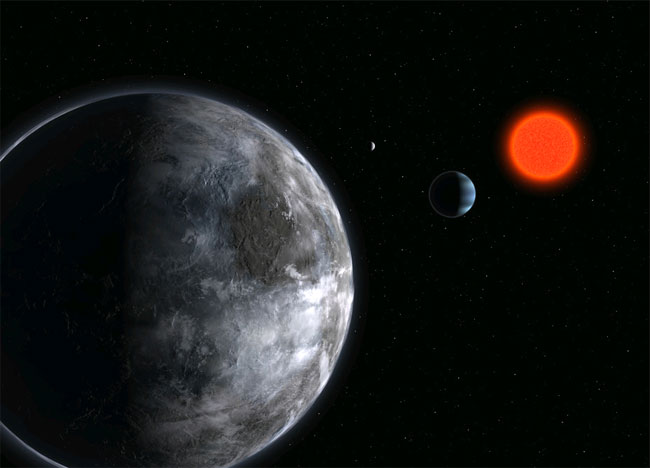Question: How Big Can Planets Get?
Answer: Here in the Solar System, we have three kinds of planets: the inner terrestrial planets, the gas giants, and the ice planets. Sadly, Pluto is no longer a planet, so we won’t deal with that here. We know how big our planets are, but how big can planets actually get in other Solar Systems. What are the biggest possible planets?
Let’s start with terrestrial planets, like our Earth. We’ll set the size of the Earth and 1 Earth radius, and the mass as 1 Earth mass. We’ve seen that terrestrial planets can get smaller, with Mars and Mercury, and astronomers have detected larger terrestrial planets orbiting other stars.
The largest known rocky planet is thought to be Gliese 436 c. This is probably a rocky world with about 5 Earth masses and 1.5 times our planet’s radius. Amazingly, this planet is thought to be within its star’s habitable zone.
What’s the largest possible rocky planet? For this I put in an email to Dr. Sean Raymond, a post doctoral researcher at the Center for Astrophysics and Space Astronomy (CASA) at the University of Colorado. Here’s what he had to say:
“The largest “terrestrial” planet is generally considered the one before you get too thick of an atmosphere, which happens at about 5-10 Earth masses (something like 2 Earth radii). Those planets are more Earth-like than Neptune-like.”
Gas giants, of course, can come much larger. Jupiter is 317 times more massive than Earth, and 11 times larger. You could fit 1,400 Earths inside Jupiter.
Thebiggest planet in the Universe (at the time of this writing) is TrES-4, which is located 1,400 light years away in the constellation Hercules. The planet has been measured to be 1.4 times the size of Jupiter, but it only has 0.84 times Jupiter’s mass. With such a low density, the media was calling TrES-4 the puffy planet.
And once again, how large can they get? Again, here’s Dr. Raymond:
“In terms of gaseous planets, once they reach 15 Jupiter masses or so there is enough pressure in the core to ignite deuterium fusion, so those are considered “brown dwarfs” rather than planets.”
What is the biggest planet in the Solar System?

